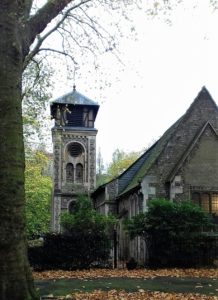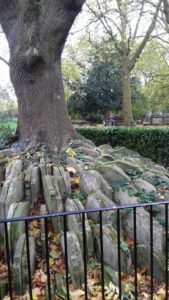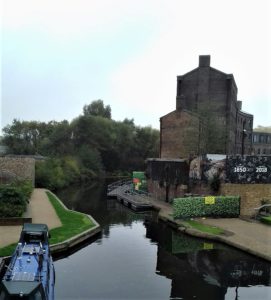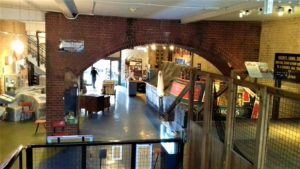Not Kafka but Kings Cross.
 The Kings Cross St Pancras part of North London has become synonymous with redevelopment in recent years. St Pancras is now the international station for Eurostar and the whole complex has been restructured to include arts performance spaces, Central Saint Martins School, newspaper offices, a nature reserve and more. Previously it was a down-at-heel, bohemian place (though not somewhere one might feel comfortable after dark, its lights were red). I went to have a mooch around this week to see if any of the old Kings Cross and St Pancras had survived.
The Kings Cross St Pancras part of North London has become synonymous with redevelopment in recent years. St Pancras is now the international station for Eurostar and the whole complex has been restructured to include arts performance spaces, Central Saint Martins School, newspaper offices, a nature reserve and more. Previously it was a down-at-heel, bohemian place (though not somewhere one might feel comfortable after dark, its lights were red). I went to have a mooch around this week to see if any of the old Kings Cross and St Pancras had survived.
Our visit began at Mornington Crescent tube station (Northern Line) a name which will always prompt a smile from BBC Radio 4 I’m Sorry I Haven’t a Clue listeners . We began there, instead of at Kings Cross itself, because we wanted to see the Hardy Tree. This stands in St Pancras Gardens, which were once part of the graveyard of St Pancras old church. Closed when the Midland railway line encroached on the old burial ground, the young architect given the unenviable job of overseeing the clearance of the graveyard was none other than Thomas Hardy, later of Wessex.
. We began there, instead of at Kings Cross itself, because we wanted to see the Hardy Tree. This stands in St Pancras Gardens, which were once part of the graveyard of St Pancras old church. Closed when the Midland railway line encroached on the old burial ground, the young architect given the unenviable job of overseeing the clearance of the graveyard was none other than Thomas Hardy, later of Wessex.
Many of the abandoned gravestones were piled together and a tree planted at their apex, standing guard over them. I like to think this was in reference to the nefarious history of the old cemetery, notorious for body-snatchers. Dickens includes it in A Tale of Two Cities as a ‘fishing’ ground, a euphemism for grave-robbing. Today the north-western corner of the gardens includes access to the St Pancras Coroner’s Court (in a fine. miniature Victorian building) and St Pancras Morgue. Very appropriate.
 After a fleeting visit to the church (someone was at their devotions) we continued on to Camley Street Nature Park, a two acre sliver of green and water created in 1984 from the old Coal Yard attaching to Kings Cross Station. It runs parallel to Regents Canal and is teeming with wild life. We saw coots and moorhens, despite the drizzle. But the Nature Park is an old metamorphosis, it is across the canal that the latest changes are underway.
After a fleeting visit to the church (someone was at their devotions) we continued on to Camley Street Nature Park, a two acre sliver of green and water created in 1984 from the old Coal Yard attaching to Kings Cross Station. It runs parallel to Regents Canal and is teeming with wild life. We saw coots and moorhens, despite the drizzle. But the Nature Park is an old metamorphosis, it is across the canal that the latest changes are underway.
Coal Drop Yard had used to be the vast coal storage depot for the two major stations which its sits behind, using the canal as a means of delivery. It is now the site of a major redevelopment. This includes the famous and much-loved Victorian gasholders which formerly stood between the two stations. They, or their facsimiles, now form part of the new development, with apartments built within two of the old ironwork frames. I dread to think what the asking price will be, in the heart of London opposite the nature reserve, but if you’re interested (and who wouldn’t be) see the  architects website. One of the gas holders has even been made into a little parklet and an out-door theatre in the round, now there’s an imaginative use of existing Victorian infrastructure.
architects website. One of the gas holders has even been made into a little parklet and an out-door theatre in the round, now there’s an imaginative use of existing Victorian infrastructure.
The whole area is a vast building site, with the old warehouses being converted into shops, offices and more apartments. It’s going to be quite something when it’s completed. Already parts of it take shape, though Thursday wasn’t a good day to see it, Granary Square was rain blown and stark. But our walk wasn’t yet over, we still had to find our final destination and this proved more difficult than we’d envisaged (mainly because of building works).
The London Canal Museum sits in New Wharf Road on Battlebridge Basin, an off-shoot of Regents Canal in an 1863 warehouse. It has only two rooms though they are packed with detail about canals, their beginnings and decline and eventual resuscitation. The warehouse originally stored ice for Carlo Gatti, Victorian immigrant from Europe who built up an ice cream/cafe/music hall  empire in late nineteenth century London. His story is told in detail in part of the Museum (his grand-son Sir John Gatti, became Lord Mayor of Westminster). The ice-well is still there.
empire in late nineteenth century London. His story is told in detail in part of the Museum (his grand-son Sir John Gatti, became Lord Mayor of Westminster). The ice-well is still there.
The first floor has temporary exhibitions in addition to the usual exhibits and at the moment it is London’s Lost Canals. I learned a lot and am now fired with enthusiasm for walking some of these ‘lost’ waterways (regular readers of The Story Bazaar might encounter reports from my doing so next year). Outside, in the Basin, the Museum’s 1949 Bantam tug is moored, awaiting a large barge to push.
We pushed off to a nearby tapas bar, in another converted warehouse, for lunch and we got there by way of Caledonian Road, a vestige of the old Kings Cross. Its buildings were dirty, down at heel and crumbling, the road noisy and congested, lined by small businesses, a nail bar, a bike repairers, a hair dressers, which looked as though they had seen better days. But what life, what cosmopolitan energy was there. Something Signor Gatti would surely have recognised. The new Kings Cross will be glossy and attractive, reusing the area’s now defunct Victorian heritage, but this, the authentic, vibrant Kings Cross, will be lost. Let’s hope it just moves somewhere else nearby.
Entry to the London Canal Museum costs £5 (concessions available) and the Museum is open from 10.00 until 4.30 Tuesday to Sunday (and Bank Holidays).
If you enjoyed this article and would like to find more about London’s hidden gems try Undiscovered Arts and Crafts Lord Leighton’s House Green Walk Or use the ‘London’ tag.


 RSS – Posts
RSS – Posts